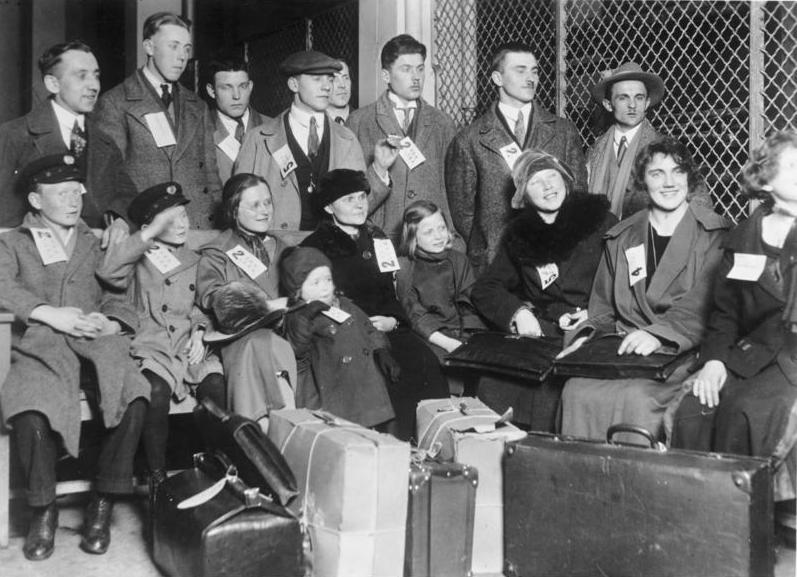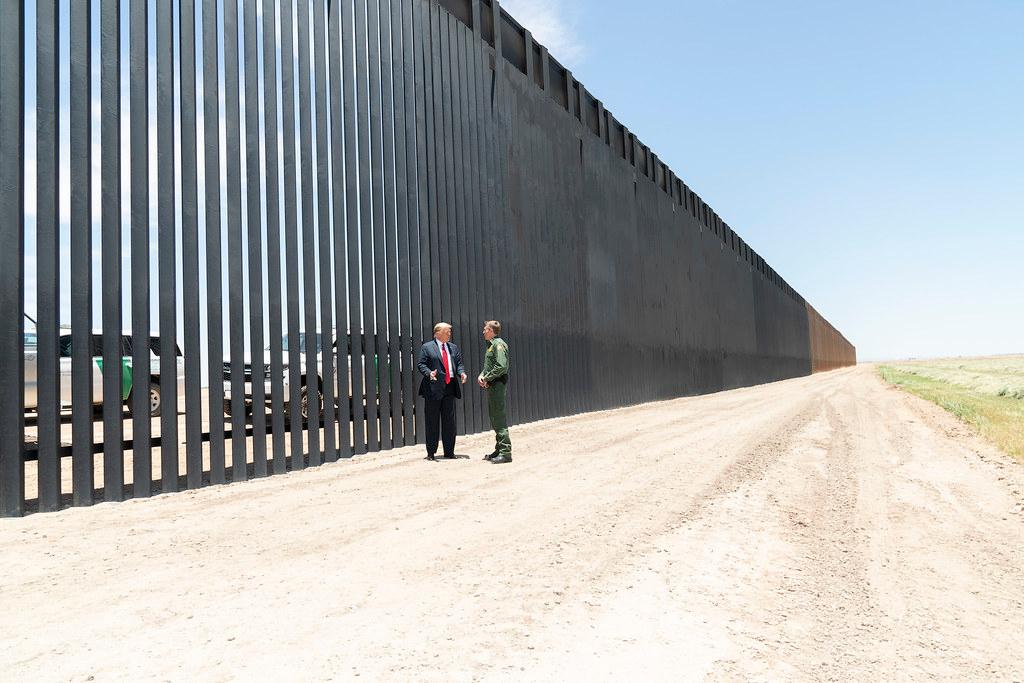Immigration to the United States

Immigration to the United States was shaped by a combination of push and pull factors. Push factors, such as religious persecution, political oppression, and widespread poverty, drove many immigrants to leave their home countries. Meanwhile, pull factors attracted immigrants to America with the promise of civil rights, economic opportunity, religious freedom, and freedoms of speech and expression.
Freedom, opportunity, and civil rights became the basis of the American system of values and the American Dream. The American Dream is the belief that everyone has the opportunity to achieve success in the United States. However, opportunity to succeed was all that was promised. It was up to the individual to work hard and create their own success. If, on the other hand, they failed, there would be no safety net to catch them.
Immigration to the United States had a profoundly negative impact on Native Americans. Europeans settlers brought diseases to which Native Americans had no immunity, resulting in devastating loss of lives. As settlers expanded westward, Native Americans were systematically displaced from their lands, which was taken from them piece by piece. This displacement often led to conflicts and war, but the settlers' better weapons and greater numbers eventually overpowered Native American resistance.

Christopher Columbus reached the Americas in 1492, with his voyage financed by Spain. Following his discovery, Spain led the early exploration and colonisation of what became known as 'the New World'. However, in the early 1600s, Britain defeated Spain in a pivotal war, and they became the dominant power at sea. Shortly after, Britain established its first colony in America in 1607. Between 1607-1680, several British colonies were founded. The colonies were under British rule, and operated with only limited self-governance.
The northern colonies
The first colonies were established along the East Coast, with distinct differences between the North and South. In the northern colonies — such as Plymouth, Massachusetts, Pennsylvania and Rhode Island — many settlers arrived seeking religious freedom. They had small farms and were predominantly middle-class. Many were well-educated and they developed industries, such as shipbuilding and lumber, linen and wool production. They also ran small shops, engaged in trade, or worked as craftsmen. This northern society was mostly middle-class and strongly influenced by religion, which shaped daily life.
The southern colonies
In the South, large plantations were established due to the mild climate and fertile soil. The initial goal of the southern colonies was profit. For example, the first settlers in Virginia were fortune seekers looking for gold and trade routes. When these plans failed, they turned to farming. With enough money to buy large amounts of land, they built a plantation economy focused on crops like cotton, tobacco, and indigo.
The plantation system relied on slavery and indentured servitude. People were forcibly taken from Africa and transported to America, where they were made to work without pay. Slave markets and slave auctions became part of everyday life in the South. Since the slaves were brought to America against their will, they are not considered immigrants in the traditional sense.
In the South, there were few opportunities for the development of a middle class. Ideas of equality and opportunity were nonexistent for slaves and less widespread in the South than in the North. The differences between the northern and southern colonies eventually led to the Civil War.

Immigration to the United States has generally been steady, though there have been noticeable ebbs and flows. During times of uncertainty and war, immigration has decreased, while it has increased during periods of progress and prosperity. When we refer to a "wave of immigration," we mean a period when many immigrants arrive.

The first wave of immigration
The first wave of immigration lasted from 1680 to around 1776, with Scots-Irish and Germans making up the majority of immigrants. After the War of Independence (1775–1783), immigration declined until around 1820.
The second wave of immigration
The second wave of immigration occurred from 1820 to 1890. This was a period when America transitioned from being mainly a rural and agricultural society to a burgeoning industrial one. It was during this wave that many Irish and Norwegians emigrated. The Irish were highly dependent on the potato, and when the potato crop failed in the 1840s, many either emigrated or faced starvation. By percentage of population, no other country sent more people to America than Ireland.
Most of the Norwegians emigrated to the Midwest, drawn in by the promise of free land. The Homestead Act granted citizens or future citizens up to 160 acres of public land, provided they lived on it, improved it, and paid a small registration fee. A couple could claim 320 acres of land together. This was far larger than any farm they had seen in Norway. They could write home to family and friends, proudly boasting about being large landowners. The government granted more than 270 million acres of land while the law was in effect.
Immigration from China
In the 1800s, many immigrants came to the United States from China. They worked as labourers, particularly on transcontinental railroads like the Central Pacific Railroad, or in mining. Chinese immigrants faced hostility, racism, and exclusion. By the end of the century, laws were enacted to restrict immigration from China.
The third wave of immigration
By the time the third wave began, the United States had become a leading industrial nation. The third wave started around 1890 and lasted until around 1930. During this period, the United States saw an influx of immigrants from new regions. Most came from Eastern and Southern Europe and settled in American cities to work in industry. The promise of a better life began to fade as immigrants were crammed into overcrowded tenement buildings and worked in factories under deplorable conditions. They soon realized that the streets of America were not paved with gold. Nevertheless, immigrants continued to pour into the United States, where they at least felt they had a chance. This wave lasted until the Great Depression in 1929.
Fourth wave of immigration
A fourth wave of immigration began in 1965 and is still ongoing. This wave includes a mix of Asian immigrants (Koreans, Vietnamese, Cambodians, Chinese, and Japanese) and Hispanics (people from Latin America and South America).
As a group, Asians have been successful, which may be explained by two factors. First, many particularly Chinese and Korean immigrants, arrive with capital and invest it wisely, often starting businesses and working long hours. Second, members of this group are generally well-educated and place a high value on education for their children. Research shows that Asian children are more likely to attend good schools than other immigrant children.
As a group, Hispanic immigrants experience a high rate of poverty. Many are poor when they arrive and must prioritise work over education. Additionally, a significant number of these immigrants come to the United States illegally, making them vulnerable to exploitation. They often accept lower wages and are afraid to complain about working conditions for fear of deportation. Furthermore, they are ineligible for government assistance as long as they remain undocumented. However, over time, as families become more established, Hispanic immigrants often work their way into the middle class.
Today, immigrants make up 14% of the U.S. population, and this number is expected to rise to 18% by 2065. It is also projected that Asians will become the largest immigrant group.
Immigration has been a hot-button issue in America for a long time, and that is unlikely to change. Since the late 1800s, various laws have been introduced to limit immigration or to ensure that only certain groups of immigrants are allowed. Those in favour of such restrictions warn against overpopulation, unemployment, poorer social conditions and a dilution of the national identity. However, those with a more inclusive attitude welcome the cultural richness that diversity represents, and point out the many ways that diversity has already enriched the USA.
In recent years, strict measures have been put in place to stop illegal immigration. Immigrants who cross the border illegally are often detained and deported. However, a significant number of people manage to cross the border without being apprehended, and this number is believed to have increased sharply in recent years. In 2021, it is estimated that as many as 660,000 people successfully crossed the U.S.-Mexico border without being stopped.
One of the key promises President Trump made to the American people when he was elected in 2016 was that he would build a wall between Mexico and the U.S. to stop the flow of illegal immigrants. By the time Trump left office in January 2021, approximately 450 miles (724 kilometers) of border wall had been constructed or replaced along the U.S.-Mexico border. Biden halted work on the wall when he took office in 2021, reallocating the funds to clean up areas where construction had already taken place and to improve infrastructure, including investments in border security technology. However, with Trump returning as president in 2025, it is not unlikely that he again will attempt to complete the project he started during his previous term.

Related content
Tasks for the article about immigration to the USA